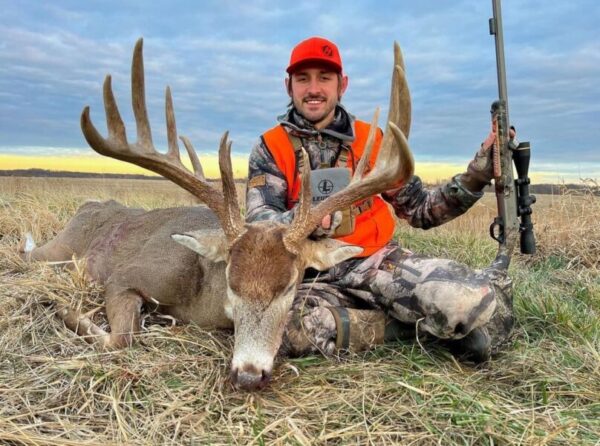As the seasons transition from the chill of winter to the renewal of spring, hunters’ minds turn to the allure of turkey hunting. Yet, amidst the anticipation of gobblers echoing through the woods, astute deer hunters recognize the opportunity to embark on comprehensive land improvement projects to optimize deer habitat. Forrest Bonin is a renowned authority in land management, an essential behind-the-scenes member for many of the Drury Outdoors crew during their hunting endeavors, and the esteemed land manager for Drury’s Terry Drury. When fall arrives, Forrest’s duties turn from working on Terry’s farm to being his full-time cameraman as they film for several online and television series. Recently, I had the opportunity to visit with Forrest to ask his tips for helping deer hunters maximize their deer habitat throughout the off-season. Forrest was eager to share his knowledge on how he helps maximize hunting land for a thriving deer population.
Bonin’s approach underscores the importance of intimately understanding deer behavior and habitat preferences to tailor land improvements effectively. “Observation is key,” he emphasizes, “by closely monitoring deer movements and behavior throughout the seasons, hunters can gain invaluable insights into the specific enhancements needed to bolster both the local deer herd and the overall hunting experience.” For example, when asked how hunters can determine when they need a change in their habitat, Forrest presented a scenario of not seeing deer early or late in the year when deer seem to disappear; it is most likely because they lack food and change routes. “If deer movement is lacking late season, be sure to plant more late season food plots the following year,” says Forrest.
As you probably guessed, the Drury Outdoors team, with Forrest helping along the way, spent the entire year consistently working on improving their habitat, making deer hunting better for the future. One thing that Forrest says they do early in the year is frost seeding. Frost seeding emerges as a pivotal strategy in Bonin’s arsenal of habitat enhancement techniques. This method, executed during the late winter months, involves strategically sowing seeds to establish or fortify existing food plots. By diversifying the available forage options, hunters can ensure a steady and varied food source throughout the year, catering to the dietary preferences of deer across different seasons. From the succulent greens of early spring to the hearty grains of late summer, a well-planned food plot can be a cornerstone of a thriving deer habitat.
In tandem with vegetation management, Bonin advocates implementing timber stand improvements (TSI) to enhance native browse availability. This multifaceted approach involves selectively thinning the forest canopy, removing dead trees, and promoting the growth of preferred browse species. When asked if he had a deer hunting memory of when prior land and habitat management played a vital role in the harvest, Forrest reflected on a successful hunt alongside Terry Drury in 2021; Bonin recounts how strategic TSI initiatives that they had done earlier in the year, resulted in a dramatic surge in natural forage. “The natural browse seemed to explode in the areas with TSI management, which began attracting an abundance of deer, including a shooter buck that we began monitoring. The abundance of natural food held the buck in the area, giving us the prime opportunity to move in and hunt the area. Fortunately, Terry was able to make a good shot, and the TSI paid off.”
Furthermore, Bonin explained the art of manipulating travel routes to influence deer movement patterns. While acknowledging the inherent challenge of dictating specific travel destinations for deer, he expounds upon various techniques to guide deer along desired pathways. From meticulously mowing lanes in tall grass and food plots to strategically falling trees and brush to create natural funnels, hunters can subtly shape the landscape to their advantage. Forrest was quick to say you’re not going to predict every step a whitetail makes by making barriers and alternate travel routes, yet it is still highly effective. He then highlighted the potential of altering fence configurations to channel deer traffic along preferred routes in areas devoid of livestock. Forrest says to be aware of cutting or removing fences when the landowner uses them for livestock. What can seamlessly integrate hunting areas with prime deer habitats could be a different situation for farmers trying to herd their livestock back to where they belong.
As hunters gear up for the forthcoming spring and summer seasons, Forrest’s comprehensive strategies serve as a beacon for those seeking to maximize their hunting land’s potential. By aligning habitat improvements with the intricacies of deer behavior and seasonal dynamics, hunters can create environments that sustain healthy deer populations and elevate the thrill of the hunt to new heights. With foresight, meticulous planning, and deep respect for nature, every acre of hunting land promises unforgettable encounters with majestic bucks amidst the timeless beauty of the great outdoors

